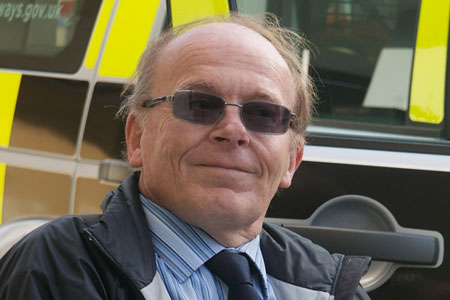“The leasing company will tell us the estimated value, but we don’t know how much the vehicle gets at auction.
Our vehicles are in good condition and serviced every six weeks. Despite the mileage, the vehicles present a good proposition for the used market.”
The Highways Agency run 4x4s because of load and towing capacity requirements. However, it does limit vehicle choice and alternative fuels.
“Alternative fuels are something to look at, but because of our requirements, they are mostly knocked out the water.
"For the vehicles team there is always that balance between the technology and the requirements for our traffic officers to do their job,” Rowley says.
Effective fleet utilisation is an ongoing challenge.
Rowley is keen to look into whether a one-size-fits-all approach is still right or whether there are more cost-efficient vehicles for different roles which could be run in conjunction with the 4x4s.
The Highways Agency is currently trialling a Vito van and two L200 pick-ups but it’s too early to tell if they have been successful.
“Whatever happens we will need to manage floods and winter weather. We always have a need for a 4x4s but there are lots of scenarios we are exploring,” says Rowley.
OIympics traffic policy: 'one man versus thousands of vehicles'
To ensure the Olympics road network ran as smoothly as possible, the Highways Agency was involved from the start of the planning process to decide on the routes crucial to the Games and the work needed to facilitate the extra traffic.
“We expanded all the routes around the London area to be prepared.
"We balanced out our route structure nationally and reallocated our resources to key routes like the M4 round Heathrow at the beginning of the games and then around the M25 and major routes thereafter,” says Alan Rowley.
An extra 12 vehicles were added to the fleet during the Olympics and Rowley organised all the service and maintenance work to be carried out prior to the event to give maximum coverage.
“We brought our services forward a couple of weeks or delayed them to give us some time and flexibility so we had maximum vehicles on the road and available,” he says.
Security was tight and numerous contingency plans to get hold of extra vehicles were in place for several possible outcomes.
One change to Highways Agency policy was to move broken down vehicles to the side of the road as quickly as possible to clear the route, rather than call a recovery vehicle which would cause an additional blockage.
“It was a toss-up between one man and his vehicle waiting for four hours or the thousands of vehicles stuck behind him,” Rowley says.
On these occasions, the individual driver was usually the one that had to wait.





















Login to comment
Comments
No comments have been made yet.